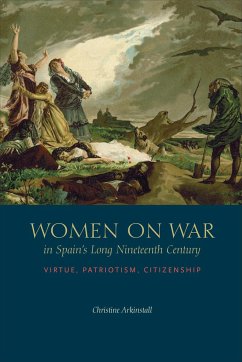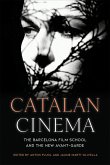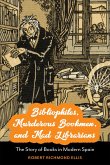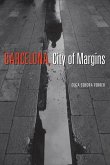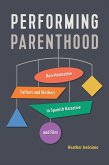- Gebundenes Buch
- Merkliste
- Auf die Merkliste
- Bewerten Bewerten
- Teilen
- Produkt teilen
- Produkterinnerung
- Produkterinnerung
Drawing on feminist theories and cultural histories, this book interweaves historical and literary contexts of Spanish female writers and their works on war.
Andere Kunden interessierten sich auch für
![Catalan Cinema Catalan Cinema]() Catalan Cinema89,99 €
Catalan Cinema89,99 €![Bibliophiles, Murderous Bookmen, and Mad Librarians Bibliophiles, Murderous Bookmen, and Mad Librarians]() Robert Richmond EllisBibliophiles, Murderous Bookmen, and Mad Librarians80,99 €
Robert Richmond EllisBibliophiles, Murderous Bookmen, and Mad Librarians80,99 €![Barcelona, City of Margins Barcelona, City of Margins]() Olga Sendra FerrerBarcelona, City of Margins50,99 €
Olga Sendra FerrerBarcelona, City of Margins50,99 €![Chocolate Chocolate]() Erin Alice CowlingChocolate30,99 €
Erin Alice CowlingChocolate30,99 €![Performing Parenthood Performing Parenthood]() Heather JeronimoPerforming Parenthood77,99 €
Heather JeronimoPerforming Parenthood77,99 €![A Poetry of Things A Poetry of Things]() Mary BarnardA Poetry of Things51,99 €
Mary BarnardA Poetry of Things51,99 €![Ambiguous Antidotes Ambiguous Antidotes]() Hilaire KallendorfAmbiguous Antidotes103,99 €
Hilaire KallendorfAmbiguous Antidotes103,99 €-
-
Drawing on feminist theories and cultural histories, this book interweaves historical and literary contexts of Spanish female writers and their works on war.
Produktdetails
- Produktdetails
- Toronto Iberic
- Verlag: University of Toronto Press
- Seitenzahl: 296
- Erscheinungstermin: 19. Dezember 2022
- Englisch
- Abmessung: 232mm x 152mm x 26mm
- Gewicht: 610g
- ISBN-13: 9781487546267
- ISBN-10: 1487546262
- Artikelnr.: 63660083
- Herstellerkennzeichnung
- Libri GmbH
- Europaallee 1
- 36244 Bad Hersfeld
- gpsr@libri.de
- Toronto Iberic
- Verlag: University of Toronto Press
- Seitenzahl: 296
- Erscheinungstermin: 19. Dezember 2022
- Englisch
- Abmessung: 232mm x 152mm x 26mm
- Gewicht: 610g
- ISBN-13: 9781487546267
- ISBN-10: 1487546262
- Artikelnr.: 63660083
- Herstellerkennzeichnung
- Libri GmbH
- Europaallee 1
- 36244 Bad Hersfeld
- gpsr@libri.de
By Christine Arkinstall
List of Illustrations
Acknowledgments
Introduction: From behind the Lines to Writing War’s Texts: Redrawing the
Boundaries of War and Gender
1. Love of Nation and Women’s Citizenship in Rosario de Acuña’s Amor a la
patria (1877)
2. Gender, Casticismo, and Imperial Nations in Spain’s fin de siècle:
Blanca de los Ríos’s Sangre española (1899)
3. Charity, Patria, and Painting War’s Pain: Concepción Arenal’s Writings,
1869-79
4. The Monstrosity of War and Justpeace: Concepción Arenal’s Cuadros de la
guerra and Ensayo sobre el Derecho de Gentes
5. Getting Intimate with Empire: Fin-de-Siècle Women Writing a Psychology
of the Disaster
6. Disordering the Imperial Home: Blanca de los Ríos’s La niña de Sanabria
(1907)
7. Purity of Blood in the National Family? Spain’s War in Morocco in Carmen
de Burgos’s En la guerra (Episodios de Melilla) (1909)
8. Between Feminist Aspirations and Pacifist Ideals: Burgos’s Essays on
World War I and Women in War
9. Denouncing War’s Broken Syntax: Burgos’s World War I Novellas
Conclusion: Transforming Moral Maps, Then and Now
Notes
References
Index
Acknowledgments
Introduction: From behind the Lines to Writing War’s Texts: Redrawing the
Boundaries of War and Gender
1. Love of Nation and Women’s Citizenship in Rosario de Acuña’s Amor a la
patria (1877)
2. Gender, Casticismo, and Imperial Nations in Spain’s fin de siècle:
Blanca de los Ríos’s Sangre española (1899)
3. Charity, Patria, and Painting War’s Pain: Concepción Arenal’s Writings,
1869-79
4. The Monstrosity of War and Justpeace: Concepción Arenal’s Cuadros de la
guerra and Ensayo sobre el Derecho de Gentes
5. Getting Intimate with Empire: Fin-de-Siècle Women Writing a Psychology
of the Disaster
6. Disordering the Imperial Home: Blanca de los Ríos’s La niña de Sanabria
(1907)
7. Purity of Blood in the National Family? Spain’s War in Morocco in Carmen
de Burgos’s En la guerra (Episodios de Melilla) (1909)
8. Between Feminist Aspirations and Pacifist Ideals: Burgos’s Essays on
World War I and Women in War
9. Denouncing War’s Broken Syntax: Burgos’s World War I Novellas
Conclusion: Transforming Moral Maps, Then and Now
Notes
References
Index
List of Illustrations
Acknowledgments
Introduction: From behind the Lines to Writing War’s Texts: Redrawing the
Boundaries of War and Gender
1. Love of Nation and Women’s Citizenship in Rosario de Acuña’s Amor a la
patria (1877)
2. Gender, Casticismo, and Imperial Nations in Spain’s fin de siècle:
Blanca de los Ríos’s Sangre española (1899)
3. Charity, Patria, and Painting War’s Pain: Concepción Arenal’s Writings,
1869-79
4. The Monstrosity of War and Justpeace: Concepción Arenal’s Cuadros de la
guerra and Ensayo sobre el Derecho de Gentes
5. Getting Intimate with Empire: Fin-de-Siècle Women Writing a Psychology
of the Disaster
6. Disordering the Imperial Home: Blanca de los Ríos’s La niña de Sanabria
(1907)
7. Purity of Blood in the National Family? Spain’s War in Morocco in Carmen
de Burgos’s En la guerra (Episodios de Melilla) (1909)
8. Between Feminist Aspirations and Pacifist Ideals: Burgos’s Essays on
World War I and Women in War
9. Denouncing War’s Broken Syntax: Burgos’s World War I Novellas
Conclusion: Transforming Moral Maps, Then and Now
Notes
References
Index
Acknowledgments
Introduction: From behind the Lines to Writing War’s Texts: Redrawing the
Boundaries of War and Gender
1. Love of Nation and Women’s Citizenship in Rosario de Acuña’s Amor a la
patria (1877)
2. Gender, Casticismo, and Imperial Nations in Spain’s fin de siècle:
Blanca de los Ríos’s Sangre española (1899)
3. Charity, Patria, and Painting War’s Pain: Concepción Arenal’s Writings,
1869-79
4. The Monstrosity of War and Justpeace: Concepción Arenal’s Cuadros de la
guerra and Ensayo sobre el Derecho de Gentes
5. Getting Intimate with Empire: Fin-de-Siècle Women Writing a Psychology
of the Disaster
6. Disordering the Imperial Home: Blanca de los Ríos’s La niña de Sanabria
(1907)
7. Purity of Blood in the National Family? Spain’s War in Morocco in Carmen
de Burgos’s En la guerra (Episodios de Melilla) (1909)
8. Between Feminist Aspirations and Pacifist Ideals: Burgos’s Essays on
World War I and Women in War
9. Denouncing War’s Broken Syntax: Burgos’s World War I Novellas
Conclusion: Transforming Moral Maps, Then and Now
Notes
References
Index

